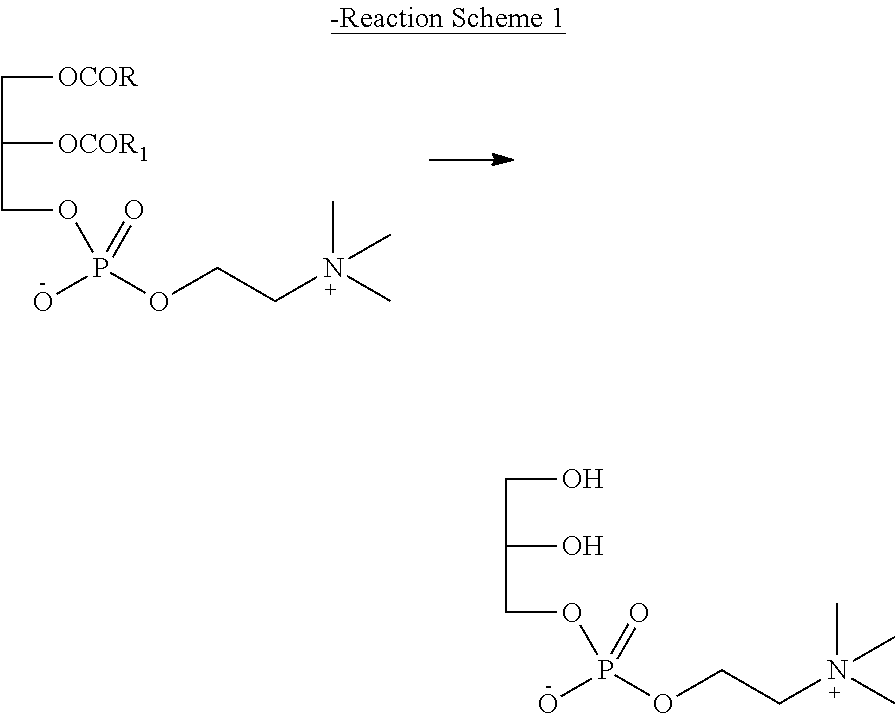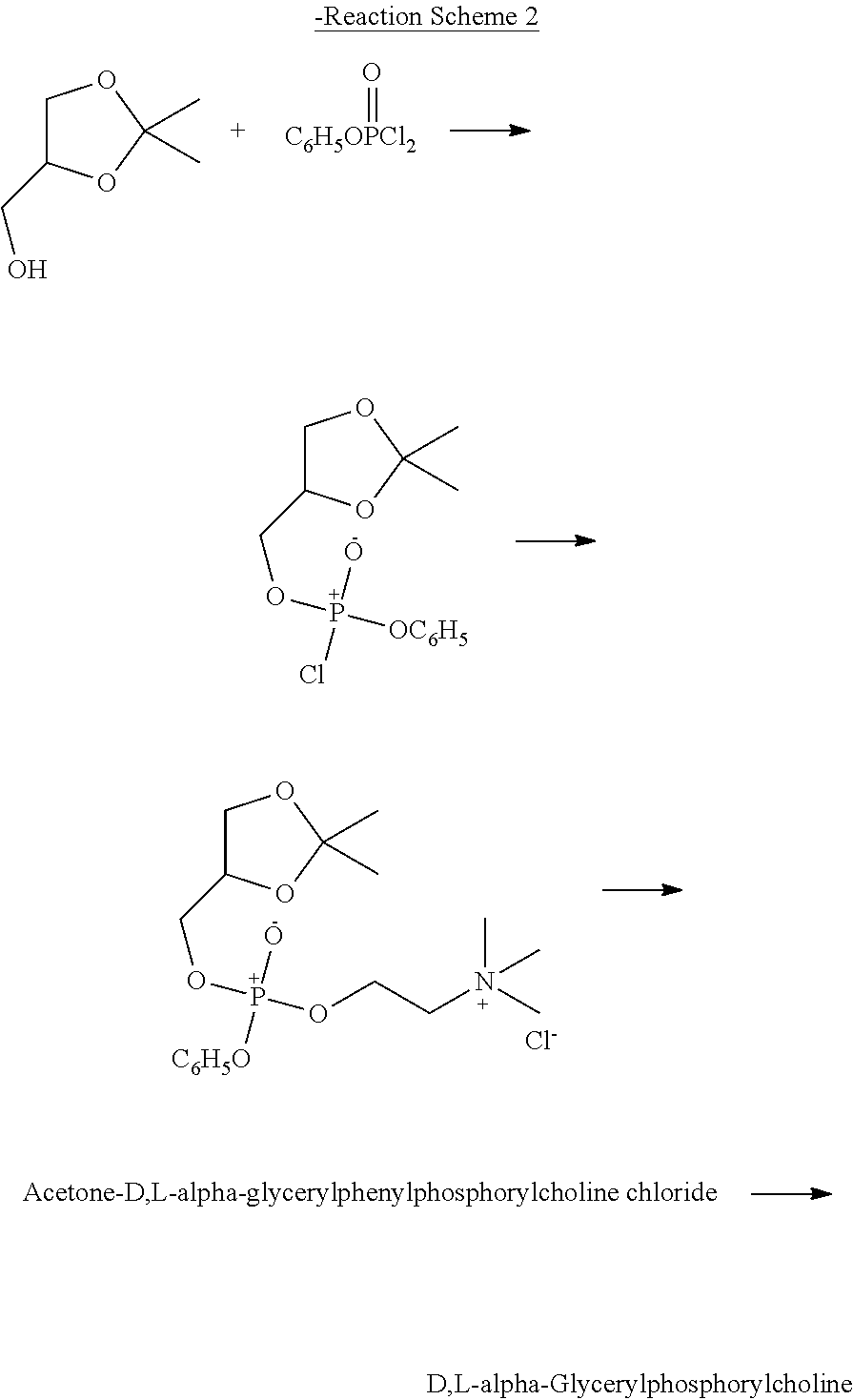Method for preparing racemic or optically active α-glycerophosphorylcholine
a technology of glycerophosphorylcholine and racemic activity, which is applied in the field of preparation of racemic or optically active glycerophosphorylcholine, can solve the problems of complex purification process, low recovery of glycerophosphorylcholine, and inability to produce a large amount of glycerophosphorylcholine, and achieves high optical purity and simple process
- Summary
- Abstract
- Description
- Claims
- Application Information
AI Technical Summary
Benefits of technology
Problems solved by technology
Method used
Image
Examples
example 1
Preparation of Racemic or Optically Active α-Glycerophosphorylcholine in the Presence of Inorganic Base
[0050]In order to prepare optically active L-α-glycerophosphorylcholine by performing a one-pot reaction based on a substitution reaction in a medium in the presence of an inorganic base which increases the activity of the reaction, experiments were performed under various conditions.
1-1
Preparation of Optically Active L-α-Glycerophosphorylcholine
[0051]In a 500-ml three-neck round bottom flask equipped with a thermometer, a reflux condenser and a stirrer, 10 g of phosphorylcholine chloride (1 equivalent 228 mmol) was dissolved in 200 ml of methanol. Then, 5.1 g of potassium hydroxide (2 equivalents, 455 mmol) was added slowly to the reaction solution, followed by stirring for 1 hour. Then, the reaction solution was heated to 60° C., after which 10 g of (R)-3-chloro-1,2-propanediol (2 equivalents, 452 mmol) was added slowly thereto, followed by reflux for 24 hours, thereby performing...
example 2
Production of Glycidol and Glycerin from Racemic 3-Chloro-1,2-Propanediol in the Presence of Inorganic Base
[0068]In order to confirm whether the intermediate (R)-glycidol is not actually produced when racemic or optically active D or L-α-glycerophosphorylcholine is prepared by the preparation method of the present invention, experiments were performed.
[0069]The production of glycidol and glycerin from racemic 3-chloro-1,2-propanediol in the presence of an inorganic base was analyzed. In a comparative example performed using the method disclosed in Korean Patent Application Publication No. 2011-0106720, the production of (R)-glycidol and glycerin from racemic 3-chloro-1,2-propanediol was analyzed.
2-1
Production of Glycidol and Glycerin from Racemic 3-Chloro-1,2-Propanediol in the Presence of Inorganic Base
[0070]In a 250-ml three-neck round bottom flask equipped with a thermometer and a stirrer, 2.53 g of potassium hydroxide (1 equivalent, 452 mmol) was dissolved in 100 ml of methanol,...
PUM
| Property | Measurement | Unit |
|---|---|---|
| temperature | aaaaa | aaaaa |
| temperature | aaaaa | aaaaa |
| temperature | aaaaa | aaaaa |
Abstract
Description
Claims
Application Information
 Login to View More
Login to View More - R&D
- Intellectual Property
- Life Sciences
- Materials
- Tech Scout
- Unparalleled Data Quality
- Higher Quality Content
- 60% Fewer Hallucinations
Browse by: Latest US Patents, China's latest patents, Technical Efficacy Thesaurus, Application Domain, Technology Topic, Popular Technical Reports.
© 2025 PatSnap. All rights reserved.Legal|Privacy policy|Modern Slavery Act Transparency Statement|Sitemap|About US| Contact US: help@patsnap.com



